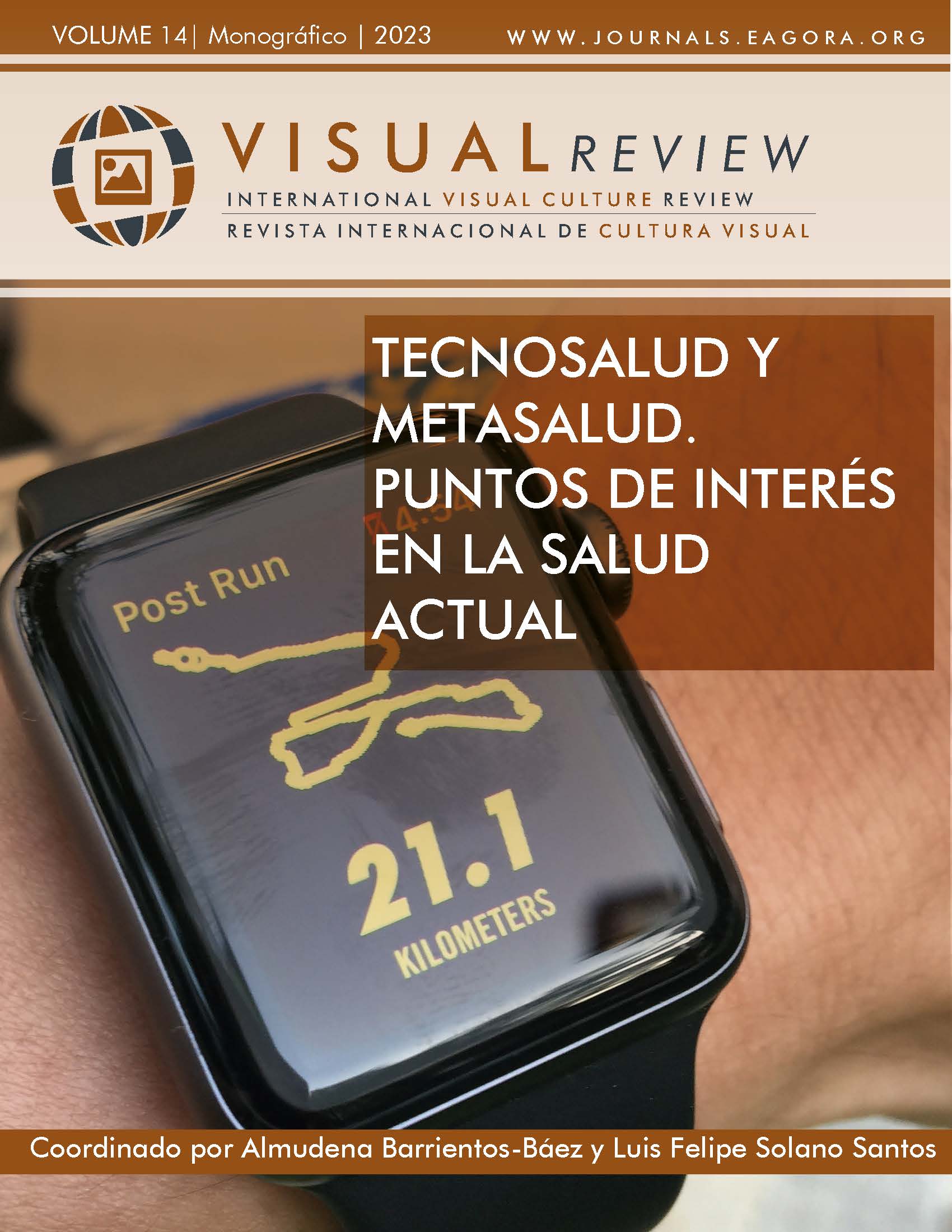Vaccines and health and communication tools: analysis of the implicit association test
DOI:
https://doi.org/10.37467/revvisual.v10.4612Keywords:
Neurocommunication, Implicit Associación Test, vaccines, Anti-vaccines, Health, Persuasion, Implicit responsesAbstract
With the anti-vaccine movement, the perception of vaccines as neither safe nor effective is accentuated, influencing the perception and behavior of the population. Understanding the psychosocial mechanisms underlying the "anti-vaccine phenomenon" will allow the development of better intervention programs. This research pursues two objectives: 1) to analyze the Implicit Association Test (IAT) as a neurocommunication tool applied to communication and health, especially in vaccines, and 2) to understand the psychological mechanisms of the vaccine and anti-vaccine concept. The IAT is a useful tool although it presents certain methodological characteristics. There is a strong association of vaccines with health, responsibility and efficacy.
Downloads
Global Statistics ℹ️
|
506
Views
|
453
Downloads
|
|
959
Total
|
|
References
Betsch, C., Renkewitz, F., Betsch, T., & Ulshöfer, C. (2010). The influence of vaccine-critical websites on perceiving vaccination risks. Journal of health psychology, 15(3), 446-455. https://doi.org/10.1177/1359105309353647 DOI: https://doi.org/10.1177/1359105309353647
Betsch, C., & Sachse, K. (2013). Debunking vaccination myths: strong risk negations can increase perceived vaccination risks. Health psychology, 32(2), 146. https://doi.org/10.1037/a0027387 DOI: https://doi.org/10.1037/a0027387
Conlledo, P. , Picciol, G., & Díaz, V. (2020). Análisis del contenido publicado en YouTube, Facebook e internet sobre vacunas y anti vacunas. Revista de Comunicación y Salud, 10(1), 67-90. DOI: https://doi.org/10.35669/rcys.2020.10(1).67-90
https://doi.org/10.35669/rcys.2020.10(1).67-90 DOI: https://doi.org/10.35669/rcys.2020.10(1).67-90
Cuesta-Cambra, U., Martínez-Martínez, L., & Niño-González, J. I. (2019). An analysis of pro-vaccine and anti-vaccine information on social networks and the internet: Visual and emotional patterns. El profesional de la información, 28(2). https://doi.org/10.3145/epi.2019.mar.17 DOI: https://doi.org/10.3145/epi.2019.mar.17
Cuesta, U., González, J. I. N., Martínez, L. M., y Díaz, V. C. (2020). La importancia del emisor en las respuestas visuales implícitas y la persuasión. El caso de los antivacunas. In Comunicación especializada: historia y realidad actual (pp. 665-684). McGraw-Hill Interamericana de España
Cuesta, U., González, B., Martínez, L., & Martínez, M. (2021). Influencers y vacunas: un análisis neuro-cualitativo del imaginario colectivo en la población juvenil. In Cultura, economía y educación: nuevos desafíos en la sociedad digital (pp. 1181-1201). Dykinson.
Cuesta, U., González, J. I. , González, C. , & Martínez, M. (2022). La neurociencia de la comunicación en salud: Propuesta de análisis de las respuestas de orientación y defensa frente a mensajes de ganancia y pérdida en campañas de vacunación. Icono14, 20(2), 4. DOI: https://doi.org/10.7195/ri14.v20i2.1853
Devine, P. G. (1989). Stereotypes and prejudice: Their automatic and controlled components. Journal of personality and social psychology, 56(1), 5. https://doi.org/10.1037/0022-3514.56.1.5 DOI: https://doi.org/10.1037/0022-3514.56.1.5
DiRusso, C., & Stansberry, K. (2022). Unvaxxed: A cultural study of the online anti-vaccination movement. Qualitative Health Research, 32(2), 317-329. https://doi.org/10.1177/10497323211056050 DOI: https://doi.org/10.1177/10497323211056050
Easton, M. (2020). Coronavirus: Social media spreading virus conspirancy theory. BBC. Recuperado de https://www.bbc.com/news/uk-53085640 )
Fazio, H., & Towles-Schwen, T. (1999). The MODE model of attitude-behavior processes. In S. Chaiken & Y. Trope (Eds.), Dual-process theories in social psychology (pp. 97–116). The Guilford Press.
Garín, M., Huenchuleo, J., Leal, N., Muñoz, A. M., & Rehbein, L. (2013). Actitudes implícitas hacia la violencia, conducta antisocial y consumo televisivo en estudiantes universitarios. Revista de Psicología, 22(2), ág-100. https://doi.org/10.5354/0719-0581.2013.30857 DOI: https://doi.org/10.5354/0719-0581.2013.30857
Green, J., Petty, J., Whiting, L., Orr, F., Walker, K., Brown, A.M., Crisp, E.P. Fowler, C., & Jones, L.K. (2021). The impact of the anti-vaccination movement and vaccine hesitancy on the health of the child. Pediatric Nursing, 47(5), 216-225, 243.
Greenwald, G., McGhee, E., & Schwartz, L. (1998). Measuring individual differences in implicit cognition: the implicit association test. Journal of personality and social psychology, 74(6), 1464. DOI: https://doi.org/10.1037/0022-3514.74.6.1464
Hardey, M. (2001). ‚E-health‘: the internet and the transformation of patients into consumers and producers of health knowledge. Information, Communication & Society, 4(3), 388-405. DOI: https://doi.org/10.1080/13691180110044416
Hobson-West, P. (2007). ‘Trusting blindly can be the biggest risk of all’: organised resistance to childhood vaccination in the UK. Sociology of health & illness, 29(2), 198-215. https://doi.org/10.1111/j.1467-9566.2007.00544.x DOI: https://doi.org/10.1111/j.1467-9566.2007.00544.x
Kahneman, D. (2011). Thinking, fast and slow. Macmillan.
Kata, A. (2012). Anti-vaccine activists, Web 2.0, and the postmodern paradigm–An overview of tactics and tropes used online by the anti-vaccination movement. Vaccine, 30(25), 3778-3789. https://doi.org/10.1016/j.vaccine.2011.11.112 DOI: https://doi.org/10.1016/j.vaccine.2011.11.112
Keelan, J., Pavri, V., Balakrishnan, R., & Wilson, K. (2010). An analysis of the Human Papilloma Virus vaccine debate on MySpace blogs. Vaccine, 28(6), 1535-1540. https://doi.org/10.1016/j.vaccine.2009.11.060 DOI: https://doi.org/10.1016/j.vaccine.2009.11.060
Martinez (2020): ¿Quién y por qué interactúa con mensajes anti-vacunas en redes? Análisis de atención visual, emociones, personalidad y creencias. Tirant lo Blanch
Martínez, L., Cuesta, U., Niño. J.I. & Bengochea, C. (2021a). La campaña mediática COVID-19 y su vacunación: Analizando la guerra pro y antivacunas en Internet. Comunicación en la era postcovid, medios audiovisuales y análisis. Dykinson. DOI: https://doi.org/10.2307/j.ctv282jjvm.5
Martínez, L, Cuesta, U y Niño, J.I. (2021). Comunicación sobre vacunas e imágenes bottom-up. Seduciendo al usuario. Fragua.
Piqueiras, P., Carballeda, B., Roberts, M. &Cuesta, C. (2022). La comunicación pro-vacunas:un estudio en torno a la eficacia del clickbait y la teoría de la inoculación. En C. Cuesta, A. Barrientos y L. Martinez Eds.). Los nuevos materiales de comunicación y salud. (pp. 125-139). Fragua.
Okuhara, T., Ishikawa, H., Okada, M., Kato, M., y Kiuchi, T. (2018). Persuasiveness of statistics and patients’ and mothers’ narratives in human papillomavirus vaccine recommendation messages: A randomized controlled study in Japan. Frontiers in public health, 6, 105. https://doi.org/10.3389/fpubh.2018.0010 DOI: https://doi.org/10.3389/fpubh.2018.00105
Ordóñez, P., & Castro-Martínez, A. (2023). Creadores de contenido especializado en salud en redes sociales. Los micro influencers en Instagram. Revista de Comunicación y Salud, 13, 23-38. https://doi.org/10.35669/rcys.2023.13.e311 DOI: https://doi.org/10.35669/rcys.2023.13.e311
Stanovich, K. E. (2005). The robot‘s rebellion: Finding meaning in the age of Darwin. University of Chicago press. DOI: https://doi.org/10.7208/chicago/9780226771199.001.0001
Waller, T., Lampman, C., & Lupfer‐Johnson, G. (2012). Assessing bias against overweight individuals among nursing and psychology students: an implicit association test. Journal of Clinical Nursing, 21(23-24), 3504-3512. https://doi.org/10.1111/j.1365-2702.2012.04226.x DOI: https://doi.org/10.1111/j.1365-2702.2012.04226.x
Zestcott, C. A., Spece, L., McDermott, D., & Stone, J. (2021). Health care providers’ negative implicit attitudes and stereotypes of American Indians. Journal of Racial and Ethnic Health Disparities, 8(1), 230-236. DOI: https://doi.org/10.1007/s40615-020-00776-w
Downloads
Published
How to Cite
Issue
Section
License
Those authors who publish in this journal accept the following terms:
-
Authors retain copyright.
-
Authors transfer to the journal the right of first publication. The journal also owns the publishing rights.
-
All published contents are governed by an Attribution-NoDerivatives 4.0 International License.
Access the informative version and legal text of the license. By virtue of this, third parties are allowed to use what is published as long as they mention the authorship of the work and the first publication in this journal. If you transform the material, you may not distribute the modified work. -
Authors may make other independent and additional contractual arrangements for non-exclusive distribution of the version of the article published in this journal (e.g., inclusion in an institutional repository or publication in a book) as long as they clearly indicate that the work was first published in this journal.
- Authors are allowed and recommended to publish their work on the Internet (for example on institutional and personal websites), following the publication of, and referencing the journal, as this could lead to constructive exchanges and a more extensive and quick circulation of published works (see The Effect of Open Access).













